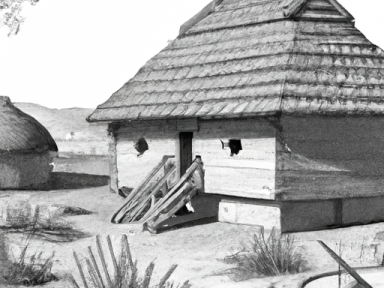
Advanced Off-Grid Construction: Techniques for Sustainable and Resilient Living
When it comes to preparing for an uncertain future, one of the key aspects of self-reliance is being able to construct a home that can sustain itself off the grid. Traditional construction methods may not be reliable in times of crisis or when resources are scarce. That’s why it’s crucial to explore alternative building techniques that are both sustainable and resilient. In this article, we will dive into the world of advanced off-grid construction and discuss three techniques that you can consider: cob, straw-bale, and rammed earth.
1. Cob Construction:
Cob construction is an ancient building method that utilizes a mixture of clay, sand, and straw. This natural composite material creates walls that are sturdy, well-insulated, and resistant to extreme weather conditions. Building with cob not only reduces your reliance on concrete and other synthetic materials but also minimizes your carbon footprint.
One of the advantages of cob construction is that it is labor-intensive but requires minimal specialized tools. By gathering local materials and working with your own hands, you can build a durable and energy-efficient home. Cob also offers excellent thermal mass, which can help regulate indoor temperatures, reducing the need for additional heating or cooling systems.
2. Straw-Bale Construction:
Straw-bale construction is another sustainable building technique that has gained popularity in recent years. By using bales of straw as insulation and structural support, you can create a well-insulated, fire-resistant, and energy-efficient home. Straw is a renewable resource that is readily available in many agricultural areas, making it an ideal material for off-grid construction.
Straw-bale homes offer excellent insulation properties, keeping the interior cool in summer and warm in winter. Additionally, these homes have a reduced environmental impact due to the use of natural and locally sourced materials. However, proper sealing and moisture control are essential to prevent issues such as mold or decay.
3. Rammed Earth Construction:
Rammed earth construction is an ancient technique that involves compressing a mixture of sand, gravel, clay, and a small amount of cement into sturdy walls. This method offers excellent durability, thermal mass, and resistance to fire and pests. Rammed earth homes can withstand extreme weather conditions and have minimal maintenance requirements.
Similar to cob construction, rammed earth relies on locally available materials, which reduces transportation costs and minimizes environmental impact. The thermal mass of rammed earth walls helps regulate temperature fluctuations, contributing to a more comfortable and energy-efficient living space.
Conclusion:
As the world becomes increasingly uncertain, it is essential to be prepared for any situation. Advanced off-grid construction techniques such as cob, straw-bale, and rammed earth offer sustainable and resilient solutions for those seeking self-reliance. By reducing our reliance on conventional construction methods and embracing these alternative approaches, we can create homes that are not only environmentally friendly but also capable of withstanding the challenges that may lie ahead. Take action today and start exploring these advanced off-grid construction methods for a more sustainable future.



GIPHY App Key not set. Please check settings